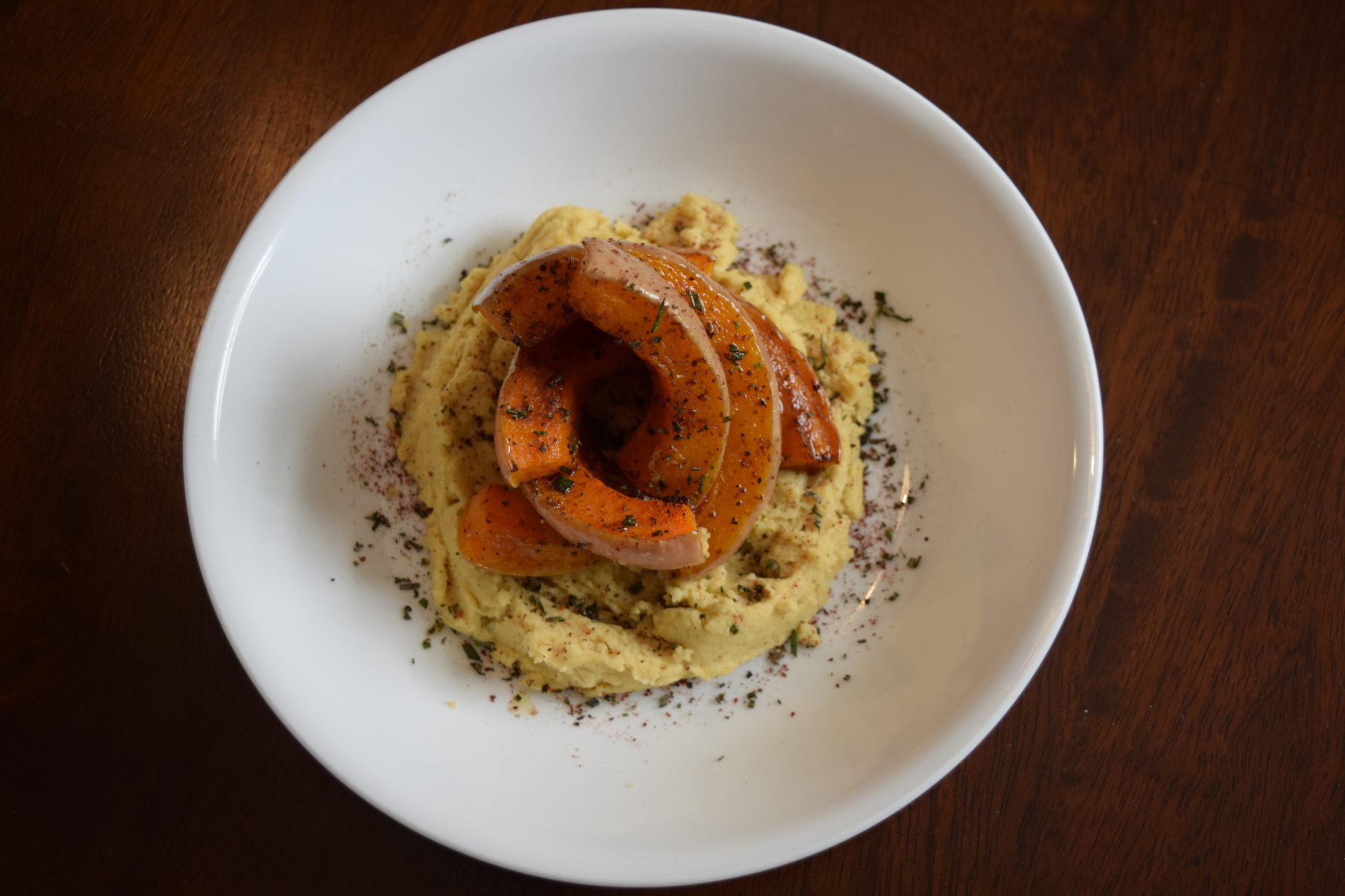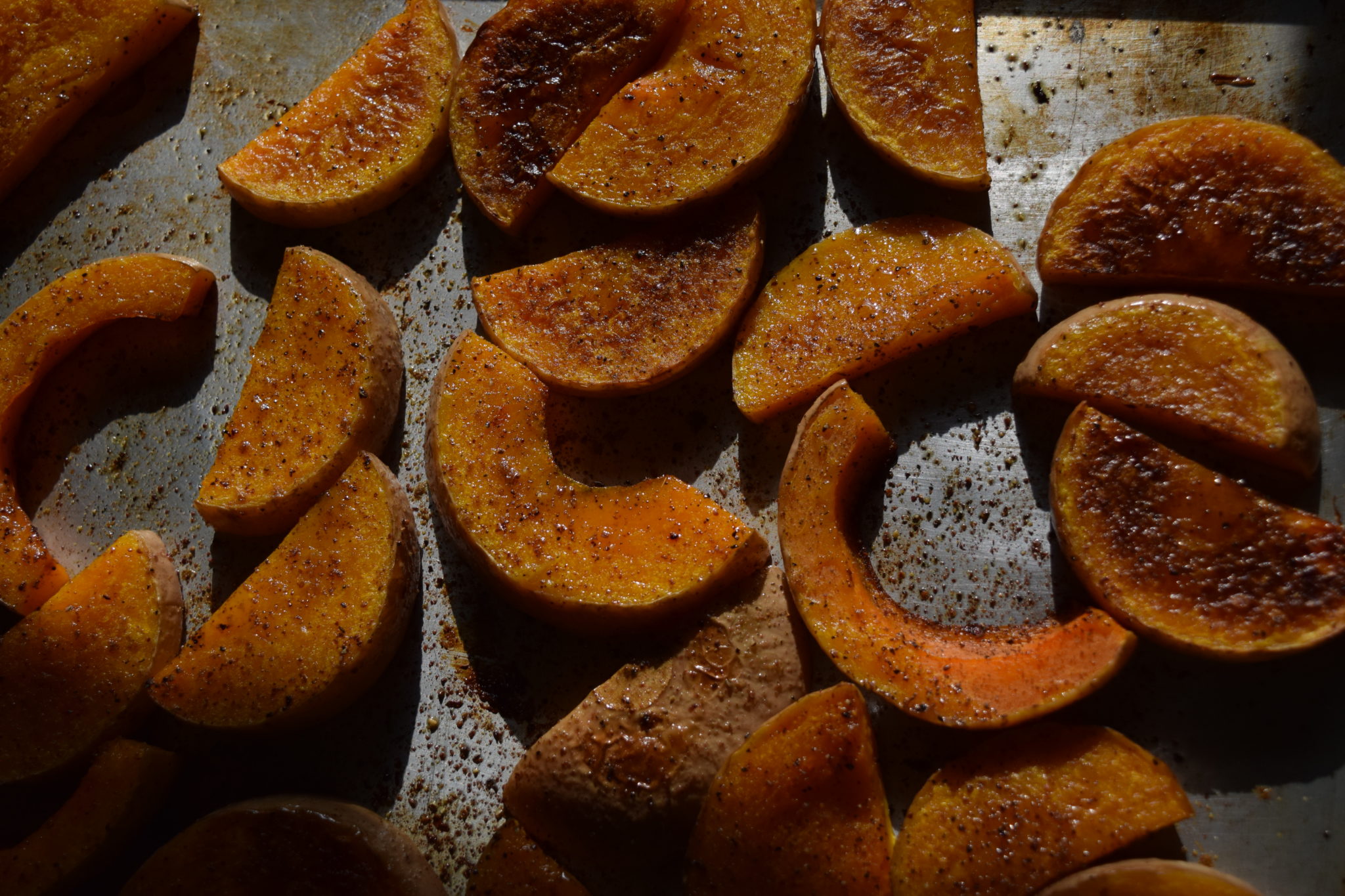
The New Year is nearly upon us and with the changing of the calendar comes motivation to set goals and improve oneself. With this in mind, I have finally agreed with my partner that a move toward eating less meat is in order. So, my focus was on vegetarian cookbooks.
This month, I looked at two books in particular. “Greenfeast: Autumn, Winter” (there is a companion volume “Greenfeast: Spring, Summer”) by Nigel Slater (you may recognize the name, he has written some amazing cookbooks and is a long-time food writer; there was even a movie made from his memoirs) and “Everyday Vegetarian,” by Jane Hughes. Though I did not yet make anything from the Everyday Vegetarian book, I did read through it and noted dishes I will make in the future. I quickly became enamored with “Greenfeast.”
”Greenfeast” is a bit more adventurous than “Everyday Vegetarian,” but both do a fantastic job at providing examples of dishes that could be made as the seasons change. As I expect to do regular meal prep, I was looking for something to guide me through months of eating. Certainly, most produce is now available year-round, but quality and price vary wildly with the seasons. Any book can show a couple dozen amazing recipes that take hours to prepare, but I was looking for that go-to manual of real-life cooking and eating. What will you turn to when you get home after a day of work and need a quick meal? The majority of the recipes in “Greenfeast” have six to eight ingredients, with the most being about 16. Lastly, the brilliant idea to focus on seasonality helps guide the shopping trip. It seems “easy” to throw a bunch of brightly-colored bell peppers with tomatoes and some spring mix when everything in bloom is light and bright. Ok, maybe I am over-simplifying, but you get the point. Some online criticisms of “Greenfeast” were that the dishes relied too heavily on dairy. I am not planning on a vegan diet, so I wasn’t much bothered. My only annoyance was the order used in the ingredients list in the recipes. I am used to: number, then unit-of-measure, then item. Slater prefers item then number. The photos are well done, and show a reasonable expectation. Every dish in the book looks amazing. Seriously! There is even a recipe entitled: Beets, Sauerkraut, and Dill and I want to make it. This was on my list to test, but I did not find suitable beets.
“Greenfeast” is one of those confidence-building books; you may make these specific recipes once or twice, but soon you’ll be prepared to make modifications to better suit your own tastes.
I made three dishes from this book:
- Sweet Potato, Jalapeno, Beans
- Pumpkin, Chickpeas, Rosemary
- Mushrooms, Chickpeas, Tahini
All three were easy to make, with the only frustration being that I tried to make both chickpea and black-eyed peas from dry. I could just not hydrate them enough to not taste chalky. The hummus did not achieve the smooth consistency I like — it was thick and heavy.
The Sweet Potato, Jalapeno, Beans dish was very good and even the picky eaters at my dinner table enjoyed it. The sweet potato skin did not survive the cooking/scooping/re-heating process, so in the future I might try some other configuration for serving, maybe just making it into a smashed sweet potato dish.
 Pumpkin, Chickpeas, Rosemary was the dish that first caught my eye (easy to do, it is on the cover). I substituted butternut squash for the pumpkin. With Thanksgiving being last month, I had had enough pumpkin for a while. As mentioned before, I was not happy with my hummus, but beyond that, this dish was excellent! And, it introduced me to sumac as a seasoning and I will forever be grateful. Also, in the process of making the butternut substitution, I learned the outer portion is edible, so that was a bonus.
Pumpkin, Chickpeas, Rosemary was the dish that first caught my eye (easy to do, it is on the cover). I substituted butternut squash for the pumpkin. With Thanksgiving being last month, I had had enough pumpkin for a while. As mentioned before, I was not happy with my hummus, but beyond that, this dish was excellent! And, it introduced me to sumac as a seasoning and I will forever be grateful. Also, in the process of making the butternut substitution, I learned the outer portion is edible, so that was a bonus.
Lastly, I made Mushrooms, Chickpeas, Tahini. One of my concerns with moving toward a vegetarian diet is that I may miss the “bite” of meat. I am confident that there are enough options to ensure a well-rounded nutritional diet, but I feared missing the substance of meat on the plate. This mushroom dish, using portobello mushrooms, allayed my fears. Again, using the chickpeas from dry did leave a bit to be desired, but beyond that the flavors were excellent. I did omit the thyme due to not finding any and the dish suffered. Confronted with a similar issue, I would add a bit of cumin to balance the flavors.
My verdict is that I love this book and will add many of these dishes to my dinner rotation. While doing research for which book I would use, I made this list of other titles.


